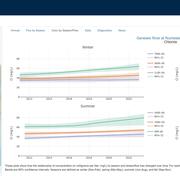Rebecca M Kreiling, PhD
Becky is an aquatic ecologist who has worked for the Upper Midwest Environmental Sciences Center since 2005.
My research interests include understanding how nutrient cycling in aquatic ecosystems influences nutrient concentrations and delivery to downstream waterbodies and providing managers with information to improve water quality and restore habitat. I conduct research across a range of aquatic ecosystems from small, isolated wetlands to large rivers and their floodplains.
Professional Experience
2019 to present Research Ecologist, US Geological Survey, Upper Midwest Environmental Sciences Center, La Crosse, Wisconsin 54603
Education and Certifications
2019 PhD, Interdisciplinary River Science, University of New England, New South Wales, Australia
2003 M.S., Biology, University of Wisconsin - La Crosse
2001 B.S., Biology-Environmental Concentration, University of Wisconsin - La Crosse







